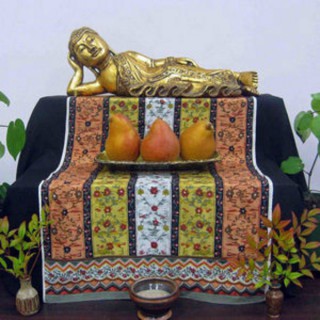Podcasts about roshi kapleau
- 4PODCASTS
- 4EPISODES
- 34mAVG DURATION
- ?INFREQUENT EPISODES
- Oct 20, 2019LATEST
POPULARITY
Latest podcast episodes about roshi kapleau
Philip Kapleau: Planting Seeds While Trailing Vines
A report on the Duke University conference celebrating the installation of Roshi Kapleau’s archives. Roshi Bodhin focuses on the unique challenges Kapleau faced–and we continue to face–in adapting Zen to the West. The post Philip Kapleau: Planting Seeds While Trailing Vines appeared first on Rochester Zen Center.
Mitra Bishop Roshi began practicing Zen in 1974 while living in Turkey and soon after began training at the Rochester Zen Center with Roshi Philip Kapleau. In 1986, Mitra-roshi was ordained by Roshi Kapleau and after completing her formal training in 1992, she moved to Sogen-ji, a Rinzai Zen temple, in Okayama, Japan, to train under the guidance of the Ven. Harada Shodo-roshi. Mitra-roshi returned to the United States in 1996 was formally sanctioned to teach by Roshi Kapleau as one of his dharma heirs. In that same year, she was asked to guide the Hidden Valley Zen Center in San Marcos, California, and as well, established Mountain Gate Sanmonji, a monastic practice center in the mountains of northern New Mexico. Mitra-roshi is an accomplished calligrapher and her writings have appeared in the books Mu, Zen Teaching, Zen Practice, Blossoms of the Dharma, and in Record of the Hidden Lamp, as well as numerous websites and magazines. A number of videos of her teisho [Zen talks] are available on YouTube. You can find out more by visiting the website for Mountain Gate Sanmonji at https://www.sanmonjizen.org/ She also works with the Regaining Balance Program which offers retreats for women veterans with PTSD. You can learn more by visiting https://www.regainingbalance.org/ And Hidden Valley Zen Center at https://www.hvzc.org/ Sit, Breathe, Bow is hosted by Ian White Maher. https://www.theseekerstable.com/ Sit, Breathe, Bow is sponsored by the Online Sangha of the International Kwan Um School of Zen https://kwanumzenonline.org
2016-05-17 The Old Woman’s Enlightenment 2
What is the enlightenment referred to in the story? What do we mean when we talk about enlightenment and kensho? Do these terms as they are used in the Three Pillars of Zen, mislead us? Roshi Sunyana Graef’s comments on how the kensho accounts affected the first generation of Roshi Kapleau’s students. Text(s) quoted: The Hidden Lamp, Stories from 25 Centuries of Awakened Women, edited by Florence Caplow and Susan Moon. Zen Teaching, Zen Practice, edited by Kenneth Kraft
Koans - A Brief Introduction, An introduction to koans- Sunya Sensei often discusses koans. This brief introduction to koans is taken from a longer teisho, Chosha's Spring Walk that will follow this podcast. Roshi Kapleau, our teacher's teacher, said in his book The Three Pillars of Zen, that a koan is "a formulation, in baffling language, pointing to ultimate truth."A well-known example is "what is the sound of one hand clapping?" Sunya sensei refers to the most widely used initial koan in our practice - Joshu's Mu. Zen teaches us that all things have Buddha nature. The koan goes, "A monk asked Joshu, Does a dog have Buddha Nature?" Joshu replies "Mu" , which means "no". The student is asked to demonstrate what is mu. Sunya Sensei refers to the dokusan room. Part of our practice is the formal private interview with the teacher, dokusan, during which the student is asked to demonstrate understanding of the koan.







